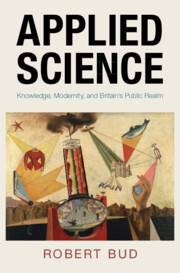Book contents
References
Published online by Cambridge University Press: 15 March 2024
Summary

- Type
- Chapter
- Information
- Applied ScienceKnowledge, Modernity, and Britain's Public Realm, pp. 266 - 315Publisher: Cambridge University PressPrint publication year: 2024

